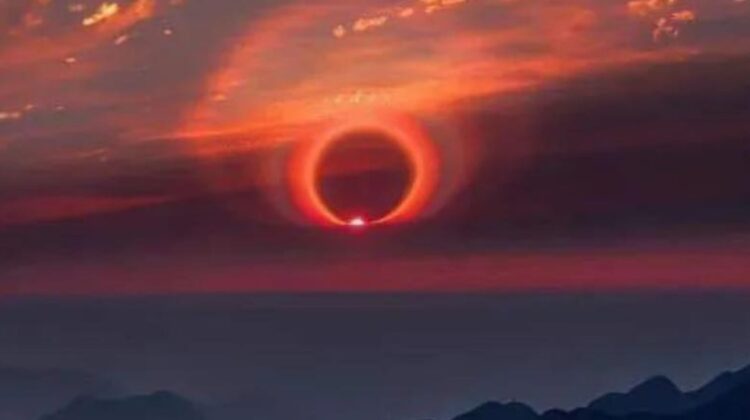
Have you ever gazed up at the sky and witnessed a breathtaking ring of light surrounding the sun? This mesmerizing phenomenon is known as a solar halo, a celestial spectacle that has captivated observers for centuries. In this article, we delve into the science behind solar halos, their significance as a weather indicator, and their captivating beauty.
The Science Behind Solar Halos

A solar halo is an atmospheric optical phenomenon that occurs when sunlight is refracted and scattered by ice crystals suspended in the atmosphere, typically in thin, high-altitude cirrus or cirrostratus clouds. These clouds are composed of tiny ice crystals that act as prisms, bending the sunlight and creating the halo effect.
The most common type of halo is the 22-degree halo, named for its 22-degree angular radius from the sun. This halo forms when sunlight passes through the hexagonal ice crystals at a specific angle, typically between 22 and 50 degrees. The halo often appears white, but under optimal conditions, faint colors, such as red on the inner edge and blue on the outer edge, can be observed.

Solar Halos as Weather Indicators
While solar halos are undoubtedly beautiful, they also serve as valuable weather indicators. The presence of cirrus clouds, which are often associated with approaching storm systems, is a key factor in halo formation. As a result, the appearance of a solar halo can often signal a change in weather conditions, such as the arrival of a storm front or a shift in atmospheric pressure.

The Beauty of Solar Halos
Beyond their scientific significance, solar halos are simply stunning to behold. The delicate ring of light encircling the sun creates a breathtaking visual spectacle that can inspire awe and wonder. Whether you’re a seasoned skywatcher or a casual observer, witnessing a solar halo is an unforgettable experience.

Solar halos are a fascinating blend of science and beauty. Their formation, significance as a weather indicator, and captivating appearance make them a captivating topic for exploration. So, the next time you see a halo around the sun, take a moment to appreciate the intricate interplay of light, ice crystals, and atmospheric conditions that create this celestial marvel.

Leave a Reply